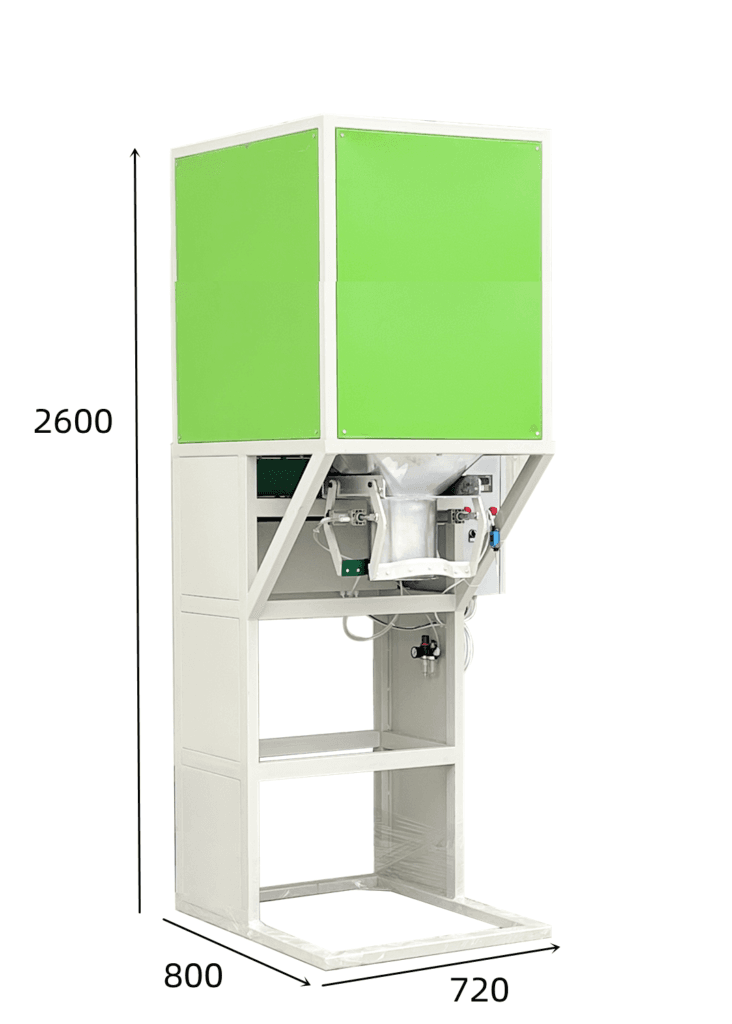Powder Packaging Machine Costs & 8 Essential Operational Requirements
Powder packaging machines are vital for industries like pharmaceuticals, food additives, and chemicals, where precision and efficiency are non-negotiable. Below, we analyze pricing variables and outline critical operational criteria to help businesses select and optimize equipment effectively.
Powder Packaging Machine Pricing Overview
Equipment costs depend on automation and precision levels:
- Semi-automatic models: $3,000–$65,000 (20–50 bags/hour)
- Mid-range automated systems: $70,000–$150,000 (60–120 bags/hour)
- High-precision GMP lines: $160,000+ (nitrogen-flushed, IoT-integrated)
Chinese manufacturers provide 25–40% cost advantages over Western counterparts while adhering to ISO 9001 and FDA standards.
8 Non-Negotiable Operational Requirements
1. Precision Dosing & Consistency
- Accuracy: Maintain ±0.5–1% weight tolerance for 2–50 lb (1–22.7 kg) packages.
- Technology: Loss-in-weight feeders with self-calibrating load cells.
- Case Example: A protein powder producer achieved 99.8% fill accuracy using servo-driven augers.
2. Advanced Automation
- Key features:
- Auto-bag placement and heat sealing.
- Reject systems for under/overfilled packages (99.9% defect detection rate).
- Integration with ERP systems for real-time data tracking.
Labor savings: 1 automated line replaces 5–8 workers, reducing costs by $200,000+/year.
3. Flexibility for Diverse Products
- Adjustability:
- Quick-change tooling for bag sizes (4″×6″ to 20″×30″/10×15 cm to 50×76 cm).
- Modular designs to switch between powders (e.g., flour vs. titanium dioxide).
- Material compatibility: Handle bulk densities from 15–60 lb/ft³ (240–960 kg/m³).
4. Safety & Operator Protection
- Critical safeguards:
- Interlocked guards halt operations if opened (response time <0.3 seconds).
- ATEX-certified models for explosive dust environments.
- Emergency stops within arm’s reach on all sides.
5. Sanitation & Maintenance Simplicity
- Hygienic design:
- Tool-free disassembly for cleaning in <15 minutes.
- Stainless steel surfaces (Ra ≤0.8 μm) prevent bacterial growth.
- Validation: Pass USDA and EHEDG hygiene audits.
6. Energy Efficiency
- Power savings:
- Regenerative braking reduces motor energy use by 18–22%.
- Smart standby modes cut idle power consumption by 30%.
7. Quality Control Integration
- In-line checks:
- Metal detection (sensitivity: 0.8 mm Fe / 1.5 mm SUS).
- Checkweighers with ±0.1 oz (±3 g) precision.
- Vision systems for seal integrity (400+ inspections/minute).
8. Scalability & Future-Proofing
- Upgrade paths:
- Add robotic palletizers for 200+ bags/hour throughput.
- Retrofit IoT modules for predictive maintenance analytics.
Implementation Best Practices
- Pre-purchase testing: Conduct 100-bag trials with your specific powder.
- Staff training: Certify operators on HMI controls and CIP (Clean-in-Place) protocols.
- Maintenance planning:
- Daily: Clear residual powder from sensors.
- Monthly: Lubricate bearings with NSF H1 grease.
- Annually: Replace wear parts (augers, sealing jaws).
Why Chinese Engineering Delivers Value
- Cost efficiency: Localized production avoids 30–45% import tariffs.
- Speed: 4–6 week lead times vs. 12+ weeks for European suppliers.
- Customization: Adapt hoppers and feed systems for cohesive powders.
